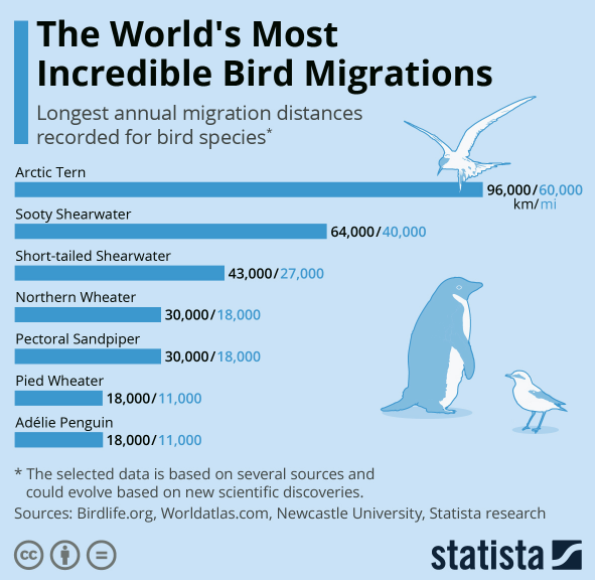Posted on 23 May, 2018 by Bushwise in Birds, Wildlife
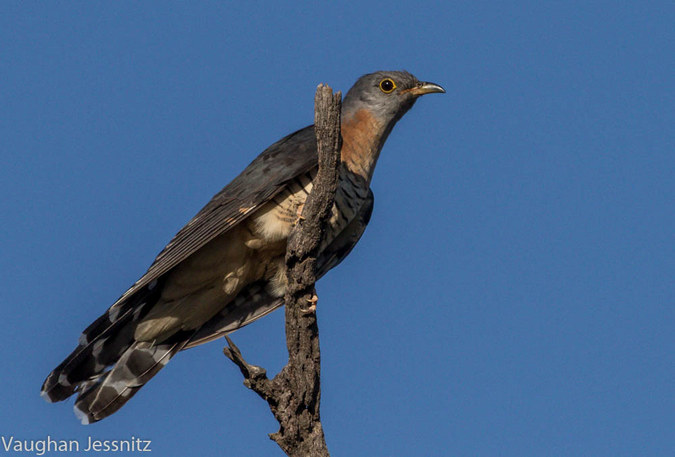 The red-chested cuckoo is a migrant to South Africa © Vaughan Jessnitz
Written by Ben Coley
Every year South Africa plays host to an influx, and then an exodus, of more than one hundred bird species that flock to its shores during the summer months to take advantage of the rich conditions in terms of weather and food availability.
The red-chested cuckoo is a migrant to South Africa © Vaughan Jessnitz
Written by Ben Coley
Every year South Africa plays host to an influx, and then an exodus, of more than one hundred bird species that flock to its shores during the summer months to take advantage of the rich conditions in terms of weather and food availability. Many of these birds undertake bi-annual trips that almost defy belief, flying from as far north as the Arctic Circle to spend part of the year enjoying South Africa’s bountiful resources. How they are able to navigate so well is still being researched, but clear evidence exists for visual and olfactory cues, use of the Earth’s magnetic field lines, and even the use of the stars for orientation!
Birding for a field guide is of vital importance due to the fact that mammals are not always found around every corner, and it is therefore up to the guide to entertain their guests with some of the smaller inhabitants of the bush. Students at Bushwise Field Guides spend hours learning to identify birds by both sight and sound, and this is especially important during the summer months when the vegetation is thicker and wildlife sightings are harder to come by. The influx of bird migrants during this time makes for a delightful cacophony of sounds to interpret for guests!
Migrants can be broadly split into two main groups
Palaearctic migrants
These birds travel from South Africa to anywhere north of the Sahara, with many venturing as far north as the Arctic Circle and as far east as China and Japan. The majority of birds undertaking this epic journey arrive here to escape the harsh northern hemisphere winter and enjoy the plentiful food supply in South Africa (the majority of migrants are insect eaters). However, although there are a few exceptions, most do not breed whilst here, choosing to do this in the north. This is a great example of nature not over-utilising a resource – if all birds bred here, the pressure in terms of space and food would be too great!
The list of palaearctic migrants are too great to list here but some of the more well-known species include the steppe buzzard, common and wood sandpipers and the red-backed shrike. Perhaps my personal favourite is the Amur falcon. This diminutive raptor breeds in Siberia and northern China before embarking on a round trip of over 20,000km to visit our shores. Its route takes it across southern Asia, the Indian Ocean and then down the eastern coast of Africa.
The Amur falcon was in the news a few years ago due to its persecution for bush meat as it overnighted in the Nagaland province of India en route to South Africa. Locals put up mist nets and were catching over 100,000 birds during their stop-over! Thankfully, due to the ensuing media campaign and conservation efforts, this horrific persecution has been stemmed. For now at least…
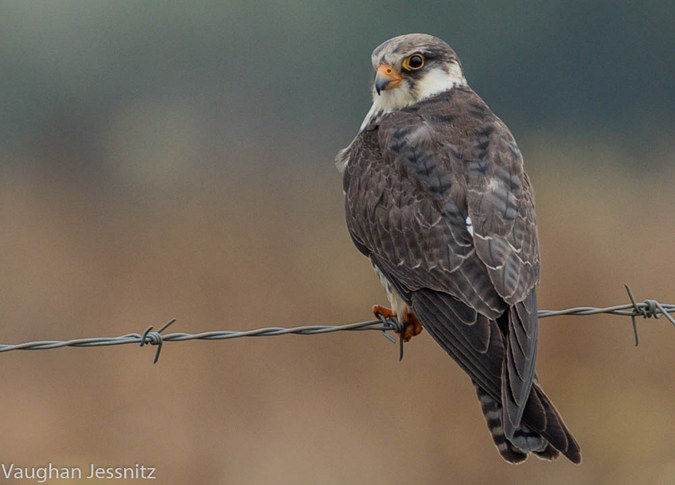 The Amur falcon migrates west through India and across the Arabian Sea to Southern Africa © Vaughan Jessnitz
Intra-African migrants
The Amur falcon migrates west through India and across the Arabian Sea to Southern Africa © Vaughan Jessnitz
Intra-African migrants
Not all birds undergo such an immense trip to the northern reaches of the planet. Many birds prefer to stay in Africa, but in it more central regions. These birds do tend to breed whilst in South Africa and it is this group that contains some of the more famous visitors to our country each year. The majority of the cuckoos fall into this category, as well as the beautiful woodland’s kingfisher. In many lodges, bets are taken by guides as to when the first sighting will be had!
Other movements and migrations are also documented but the line between altitudinal migrants and those with local movements is often blurred. Either way, for any aspiring birder it pays to visit South Africa during the summer months in order to take advantage of the rich diversity, as well as enjoying the stunning breeding plumage exhibited by some birds at this time of year (as opposed to their duller ‘eclipse plumage’ worn during the winter months).
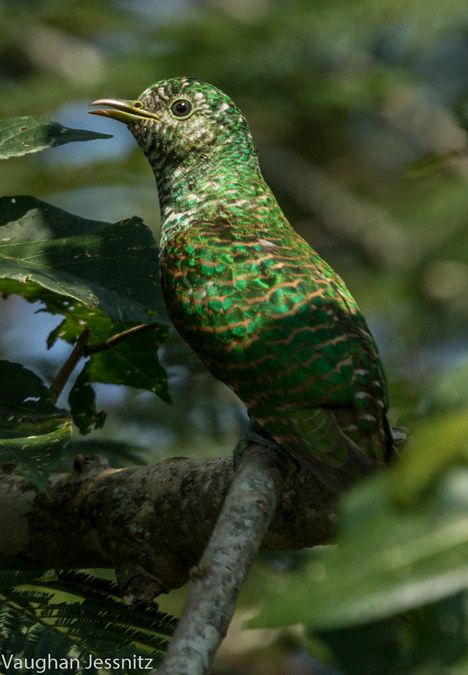 A juvenile African emerald cuckoo – an intra-African migrant © Vaughan Jessnitz
Some mention should be made of the record holders:
Longest journey
A juvenile African emerald cuckoo – an intra-African migrant © Vaughan Jessnitz
Some mention should be made of the record holders:
Longest journey
The Arctic tern travels from the northern hemisphere tundra all the way to the Antarctic pack ice. This means a total distance of close to 50,000km each year! These birds may live to up to 25 years and thus may fly close to 1 million kilometres during their lives!
Fastest non-stop journey
The amusingly named bar-tailed godwit flies from the Alaskan tundra to New Zealand in a non-stop migratory extravaganza. This is a trip of 11,600km without stopping (and we think a 42km marathon is hard work!?) Incredibly, these birds take a mere six days to accomplish this trip and at an average speed of close to 80km/h!
Highest flyers
Most birds fly relatively low at about 2,000 – 3,000m above sea level. Some of the raptors choose to fly a little higher, in the 4,000 – 7,000m range, no doubt to use the high altitude winds to take the pressure of carrying their larger weight over long distances. The record, however, is held by a Rüppell’s vulture that was viewed by a plane over the Ivory Coast at a height of 11,600m! To put that in perspective, Mount Everest is just under 9,000m!
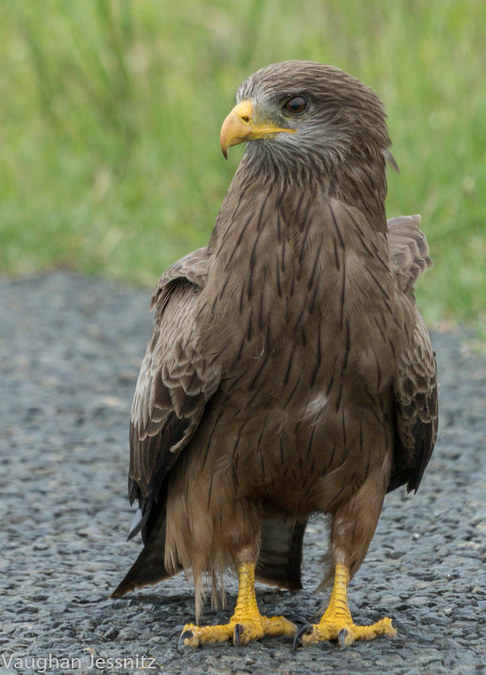 he yellow-billed kite is an intra-African migrant © Vaughan Jessnitz
he yellow-billed kite is an intra-African migrant © Vaughan Jessnitz




